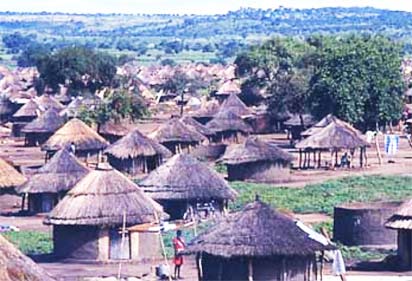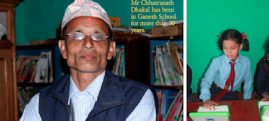
By Irungu Peter
Having been based on the experiences of Uganda, one of the countries that host the highest number of refugees, this article explores 7 most common misconceptions about refugees and refugee camps.
Uganda’s experience with refugees dates back to the colonial era. At the peak of the Second World War in 1942, for instance, the country hosted 7000 Polish refugees (mainly women and children) in Nyabyeya and Kojja in Masindi and Mukono districts respectively.
Over the years as conflicts engulf the great lakes and the horn of Africa, Uganda continues to host refugees from Rwanda, Burundi, the DR Congo, Kenya, South Sudan, Sudan, Ethiopia, Eritrea, and Somalia.
Currently, Uganda hosts over 460000 refugees and by May 2015 there were 71,949 refugees and asylum seekers residing in Kampala alone. According to the UNHCR, Uganda is currently hosting the biggest number of refugees in its history. This makes it the ninth-largest refugee-hosting country in the world and fourth-largest host country relative to national GDP.
It is often argued that Uganda has one of the most progressive refugee regimes in Africa. The 2006 Refugee Act of Uganda is considered a comprehensive legislation that touches on various aspects of refugee wellbeing. Though the Act is good on paper its implementation on the ground still faces a lot of challenges, ranging from ignorance of its content to service providers, lack of sufficient funding for implementation and allegedly the UNHCR’s red tape riddled local bureaucracy. In addition, a part of the government mechanism has been accused of being reluctant to implement the Act.
The Ugandan government and the UNHCR policy has been that all refugees must settle in government gazetted refugee settlements. Several refugee settlements have been set up around the country in the districts of Arua, Adjumani, Moyo, Kyenjojo, Hoima, Masindi and Isingiro. Active settlements include Nakivale, Oruchinga, Kyangwali, Kiryandongo, Paralonya, and the integrated camps of Adjumani. There are options for asylum seekers and refugees to stay in urban areas like Kampala as long as they can be self-reliant.
However, there are so many misconceptions, stereotypes, and outright lies about the state of refugees in the settlements in Uganda.
Myth 1: There is an officially demarcated place where only refugees reside.
This is far from the truth. All refugee settlements have a substantial number of Ugandans who live, work and reside in them. They live side by side with refugees and share facilities and services including schools, water and sanitation services, health facilities, and markets among others.
Myth 2: In refugee settlements, refugees get everything for free:
People often tend to think that refugees are fully fed by the WFP, clothed by the UNHCR and other humanitarian agencies. This is far from the reality on the ground.
People often tend to think that refugees are fully fed by the WFP, clothed by the UNHCR and other humanitarian agencies. This is far from the reality on the ground.
For example, refugees in Ugandan settlements receive 12kgs of maize flour, 2 kgs of beans, ½ liter of cooking oil, and ¼kg of salt per month. Things like clothes, sugar, tea-leaves, etc. are required to be arranged by the refugees themselves. Primary education and primary health care as well as some other services are available for refugees in the settlement camps, though these facilities are few and far in distances and always overcrowded.
Myth 3: Refugees are one homogenous group:
This is a fallacy indeed. Refugees in settlements are from diverse backgrounds, consisting of various nationalities, age groups, religious background, and social status. Therefore one cannot have a uniform solution to all these diversities as each has their unique needs and aspirations.
Myth 4: Refugees are poor and idle:
This may be true for some refugees, but this does not necessarily apply to all refugees. Refugees, like the rest of us, are often industrious and busy making ends meet. In Uganda’s case, some refugees are farmers, herders, traders, teachers, and so forth. Refugees are some of the most innovative and resilient people I have ever met. They work hard to cater to their families even in very harsh environments.
Myth 5: Refugee settlements are a place inhabited by illiterate, ignorant populations who do not know what is happening in the world:
This is again far from the truth.
Refugees in the settlements are well informed of events taking place in their home countries and in their neighborhoods. Examples show that they tend to have formal and informal information-gathering tools. There are all manners of professionals residing in the settlements ranging from engineers, doctors, health workers, lawyers, economists, and teachers among others. Recently there was a news story of a Congolese refugee with a Ph.D. living in Kyangwali settlement in the Hoima district.
Myth 6: Refugees are hopeless and entirely dependent on relief and humanitarian aid
I think this is the biggest misconception of all about refugees, at least based on my observation of refugees in Ugandan settlements. Refugees are as hard-working as anyone of us. They do not spend their entire life with a borrowing bowel and waiting for handouts. Life may be hard in refugee settlements, but the majority of refugees develop sustainable coping mechanisms to deal with their day to day realities.
Myth 7: Refugees are sad, unhappy and miserable
This is, in fact, not always true. Irrespective of their situations, refugees are seen facing their struggles with a smiling face and are often very open and welcoming.
The majority of refugee stories and narratives are written and told by persons who have never been refugees themselves.
The majority of refugee stories and narratives are written and told by persons who have never been refugees themselves. They write and present them through their own lenses, experiences, and background. Though we cannot authoritatively say that they are wrong, but some certainly are riddled with exaggerations.

Though life in refugee camps all over the world can certainly be very challenging, refugees do devise coping mechanisms that make life a bit bearable. Thus the doom and gloom scenario being portrayed by some as the true picture of life in refugee camps and settlements is not entirely true.
Refugees in settlements or elsewhere do not need handouts, what they need is a conducive environment and equal opportunity to harness their potentials and talents.










